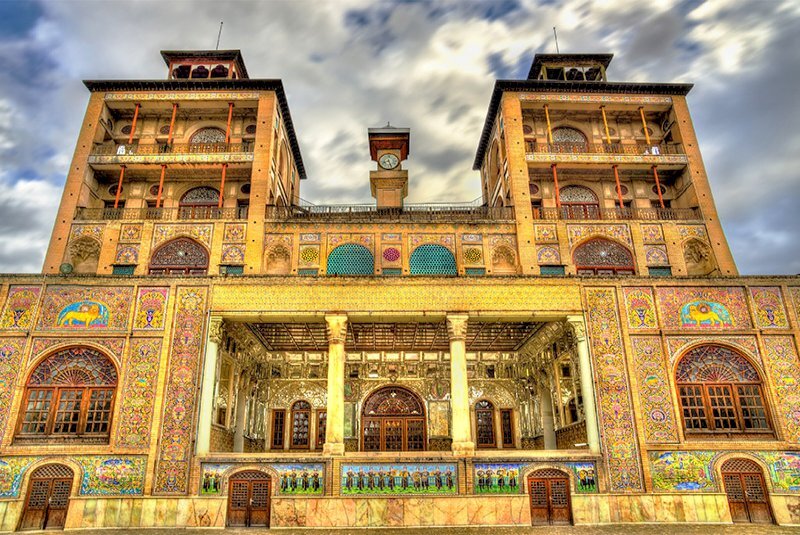TEHRAN –A number of colorful painted tiles of Shams-ol-Emareh, an edifice in the UNESCO-registered Golestan Palace in downtown Tehran, has undergone some rehabilitation works, the director of the palace has said.
The project involves repairing damaged tiles, replacing worn-out materials and cleaning the façade of the historical structure, Afarin Emami explained on Sunday.
Shams-ol-Emareh, or the Edifice of the Sun, is a masterpiece that deserves to be recognized on its own even though it is a part of the UNESCO-designated Golestan Palace. A tower with a 360-degree view of the city was one of Nasser al-Din Shah’s initial projects. Two years after work started, in 1867, it was completed.
The building has a central open hall and twin two-tiered towers on top with arched windows and elaborate tilework. It is simple to picture Nasser al-Din Shah achieving his desired view, even though it is not possible to climb to the top.
Located in the heart and historic core of Tehran, the Golestan Palace complex is one of the oldest in the Iranian capital, originally built during the Safavid dynasty (1501–1736) in the then walled town.
Following extensions and additions, it received its most characteristic features in the 19th century, when the palace complex was selected as the royal residence and seat of power by the Qajar ruling family (1789-1925).
During the time it became a center of arts and architecture, which is an outstanding example and has remained a source of inspiration for Iranian artists and architects to this day. It embodies a successful integration of earlier Persian crafts and architecture with Western influences.
At present, the Golestan Palace complex consists of eight key palace structures mostly used as museums and the eponymous gardens, a green shared center of the complex, surrounded by an outer wall with gates. The complex exemplifies architectural and artistic achievements of the Qajar era including the introduction of European motifs and styles into Persian arts.


No comments:
Post a Comment